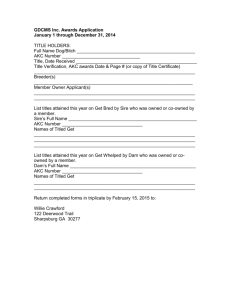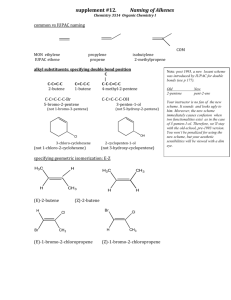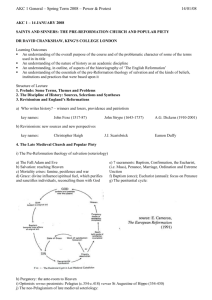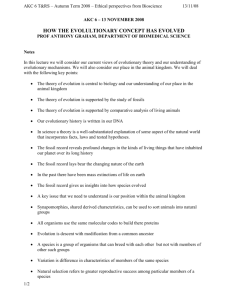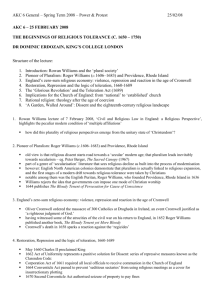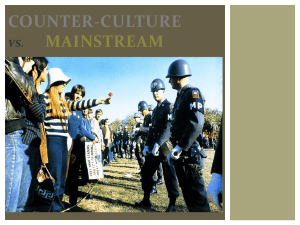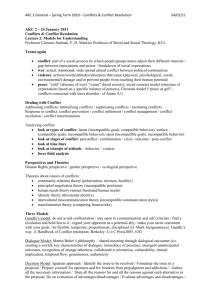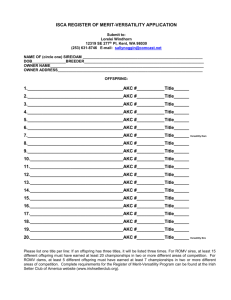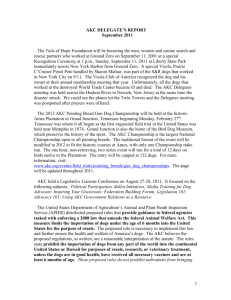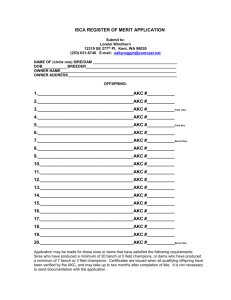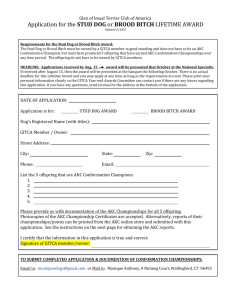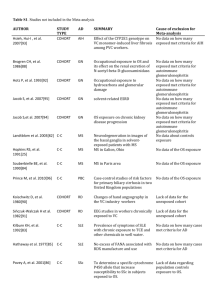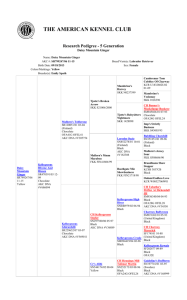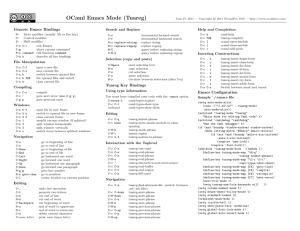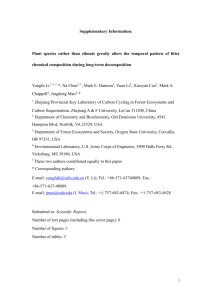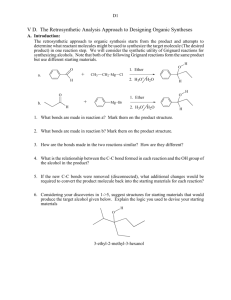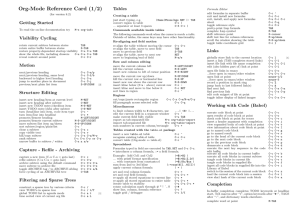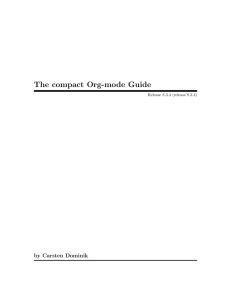Lecture 2 - King`s College London
advertisement
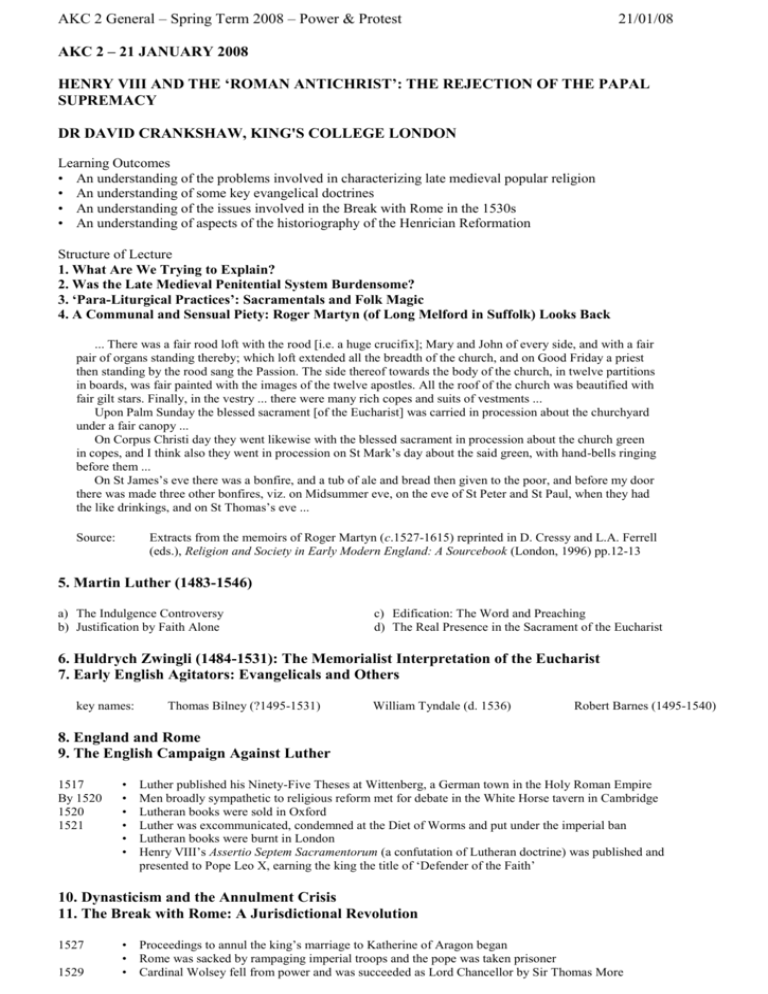
AKC 2 General – Spring Term 2008 – Power & Protest 21/01/08 AKC 2 – 21 JANUARY 2008 HENRY VIII AND THE ‘ROMAN ANTICHRIST’: THE REJECTION OF THE PAPAL SUPREMACY DR DAVID CRANKSHAW, KING'S COLLEGE LONDON Learning Outcomes • An understanding of the problems involved in characterizing late medieval popular religion • An understanding of some key evangelical doctrines • An understanding of the issues involved in the Break with Rome in the 1530s • An understanding of aspects of the historiography of the Henrician Reformation Structure of Lecture 1. What Are We Trying to Explain? 2. Was the Late Medieval Penitential System Burdensome? 3. ‘Para-Liturgical Practices’: Sacramentals and Folk Magic 4. A Communal and Sensual Piety: Roger Martyn (of Long Melford in Suffolk) Looks Back ... There was a fair rood loft with the rood [i.e. a huge crucifix]; Mary and John of every side, and with a fair pair of organs standing thereby; which loft extended all the breadth of the church, and on Good Friday a priest then standing by the rood sang the Passion. The side thereof towards the body of the church, in twelve partitions in boards, was fair painted with the images of the twelve apostles. All the roof of the church was beautified with fair gilt stars. Finally, in the vestry ... there were many rich copes and suits of vestments ... Upon Palm Sunday the blessed sacrament [of the Eucharist] was carried in procession about the churchyard under a fair canopy ... On Corpus Christi day they went likewise with the blessed sacrament in procession about the church green in copes, and I think also they went in procession on St Mark’s day about the said green, with hand-bells ringing before them ... On St James’s eve there was a bonfire, and a tub of ale and bread then given to the poor, and before my door there was made three other bonfires, viz. on Midsummer eve, on the eve of St Peter and St Paul, when they had the like drinkings, and on St Thomas’s eve ... Source: Extracts from the memoirs of Roger Martyn (c.1527-1615) reprinted in D. Cressy and L.A. Ferrell (eds.), Religion and Society in Early Modern England: A Sourcebook (London, 1996) pp.12-13 5. Martin Luther (1483-1546) a) The Indulgence Controversy b) Justification by Faith Alone c) Edification: The Word and Preaching d) The Real Presence in the Sacrament of the Eucharist 6. Huldrych Zwingli (1484-1531): The Memorialist Interpretation of the Eucharist 7. Early English Agitators: Evangelicals and Others key names: Thomas Bilney (?1495-1531) William Tyndale (d. 1536) Robert Barnes (1495-1540) 8. England and Rome 9. The English Campaign Against Luther 1517 By 1520 1520 1521 • • • • • • Luther published his Ninety-Five Theses at Wittenberg, a German town in the Holy Roman Empire Men broadly sympathetic to religious reform met for debate in the White Horse tavern in Cambridge Lutheran books were sold in Oxford Luther was excommunicated, condemned at the Diet of Worms and put under the imperial ban Lutheran books were burnt in London Henry VIII’s Assertio Septem Sacramentorum (a confutation of Lutheran doctrine) was published and presented to Pope Leo X, earning the king the title of ‘Defender of the Faith’ 10. Dynasticism and the Annulment Crisis 11. The Break with Rome: A Jurisdictional Revolution 1527 1529 • Proceedings to annul the king’s marriage to Katherine of Aragon began • Rome was sacked by rampaging imperial troops and the pope was taken prisoner • Cardinal Wolsey fell from power and was succeeded as Lord Chancellor by Sir Thomas More AKC 2 General – Spring Term 2008 – Power & Protest 1530 1531 1532 • • • • • • • • • • • • • 1533 1534 • • • • • • • • • • • • • • 21/01/08 The first session of the ‘Reformation Parliament’ began; some anti-clerical legislation was passed Certain clergy were accused of praemunire (i.e. of recognizing a foreign jurisdiction) Cardinal Wolsey died in disgrace Praemunire charges were extended to the whole English clergy An Act for the Pardon of the Clergy was passed The clergy were fined and forced to admit a limited measure of Royal Supremacy in the English Church Thomas Cromwell joined the king’s council The Act in Conditional Restraint of Annates (i.e. certain papal taxes) was passed, but was to remain inoperative for a year Thomas Cromwell sponsored the revival (from 1529) of the ‘Commons’ Supplication Against the Ordinaries’, which complained of ecclesiastical oppression Convocation (the English Church’s law-making body) responded with the ‘Answer of the Ordinaries’ The king gave his support to a determined assault on the Church Convocation was forbidden to pass any further ecclesiastical laws The Submission of the Clergy took place, in which the clergy acknowledged the king’s Supreme Headship in the English Church in spiritual matters Sir Thomas More resigned as Lord Chancellor William Warham, Archbishop of Canterbury, died Thomas Cranmer became Archbishop of Canterbury The king’s marriage to Katherine of Aragon was annulled and he married Anne Boleyn The Act in Restraint of Appeals was passed (i.e. appeals to Rome were prohibited) The king activated the earlier Act in Conditional Restraint of Annates (see 1532) The Princess Elizabeth (i.e. the future Queen Elizabeth I) was born The Act in Absolute Restraint of Annates was passed, making earlier statutory instruments permanent The Dispensations Act was passed; dispensations from canon law (i.e. the system of law governing the Church) would now be obtained from the Archbishop of Canterbury instead of from Rome The Act for the Submission of the Clergy was passed The Act of Succession was passed, stating that the Crown was to descend to the issue of the king’s marriage to Anne Boleyn; it became treason to dispute that succession and subjects were to swear an oath admitting its validity The Act of Supremacy was passed, declaring that the king was Supreme Head on earth of the Church of England The Treason Act was passed, extending treason to verbal attacks on the king The Act concerning First Fruits and Tenths was passed; these papal taxes were transferred to the Crown 12. Personalities, Power and Policies a) G.R. Elton’s Thomas Cromwell and the ‘Tudor Revolution in Government’ b) J.J. Scarisbrick’s Henry VIII c) Court faction d) Debate: Anne Boleyn as a patroness of evangelicals? e) George Bernard’s Henry VIII and a ‘via media’ 13. The ‘Compliance Conundrum’: Revisionism and Post-Revisionism a) High profile victims (e.g. Sir Thomas More and John Fisher, Bishop of Rochester) b) Confrontation: The Pilgrimage of Grace (1536) c) Change on the ground d) e) f) g) Officials (e.g. churchwardens, justices of the peace) Christopher Haigh’s piecemeal Reformation Norman Jones on generational turnover Ethan Shagan on collaborations and accommodations 14. Conclusion: Some Implications a) Parliamentary statute b) Vested interests: the nobility and gentry c) The English Bible d) Continental exiles (e.g. John Hooper) e) The education of the future King Edward VI f) Minority and the succession Further Reading D. Rosman, The Evolution of the English Churches, 1500-2000 (2003) Chapter 2 Full details about the AKC course, including copies of the handouts, can be found on the AKC website at: http://www.kcl.ac.uk/akc. Please join in the Discussion Board and leave your comments. If you have any queries please contact the AKC Course Administrator on ext 2333 or via email at dean@kcl.ac.uk. Please note the AKC Exam is on Monday 21 April 2008 between 14.30 and 16.30. You must register for the course, using the form on the website, before registering for the exam. EXAM REGISTRATION opens on Monday 4 February 2008. Please reply to the email you will receive giving your full name and student ID number. The deadline for AKC exam registration is Thursday 20 March 2008. AKC 2 General – Spring Term 2008 – Power & Protest 21/01/08
